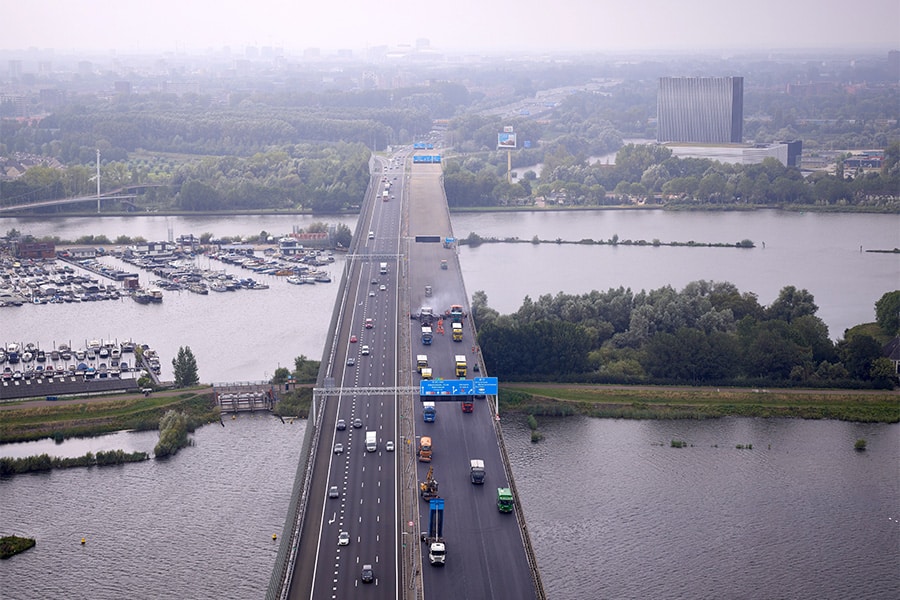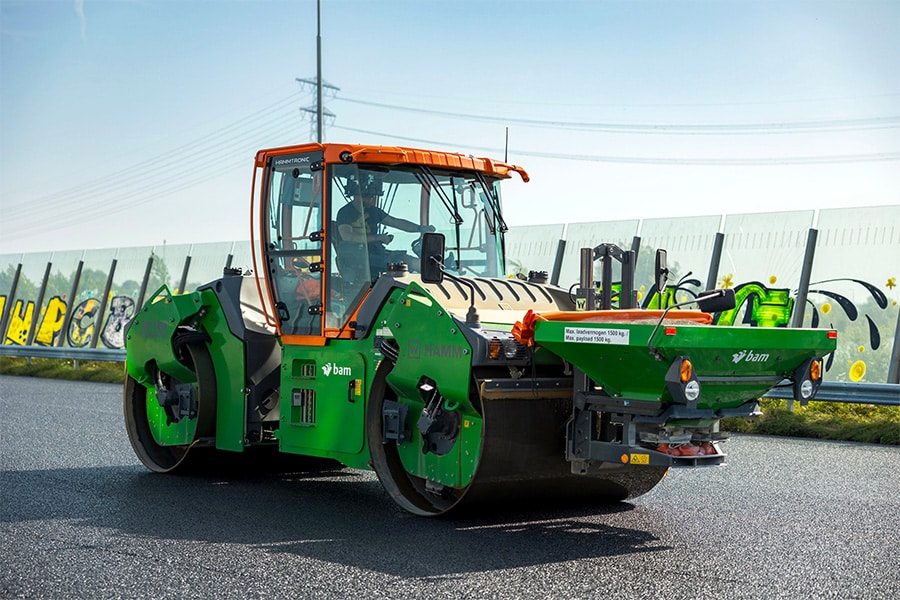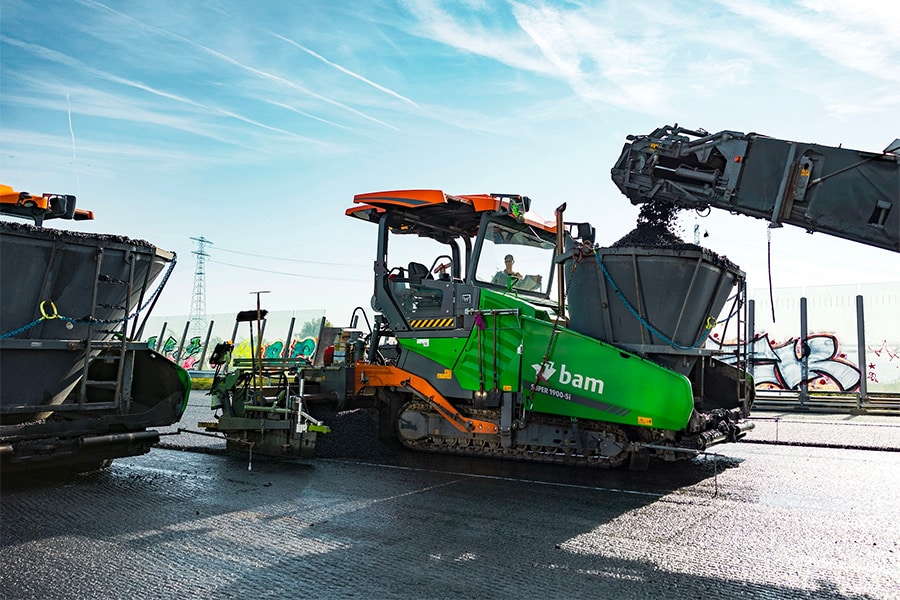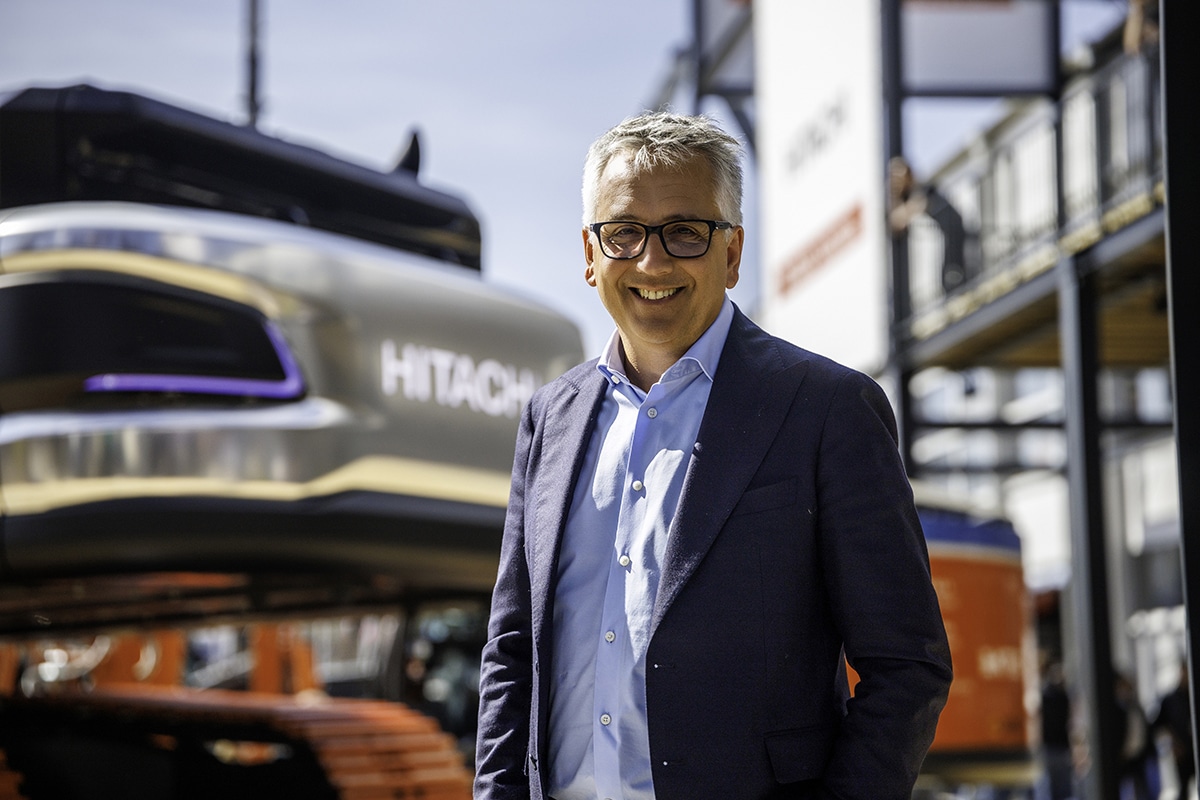
Rijkswaterstaat and BAM join forces for sustainable A10 road surfacing
Last summer, construction company BAM Infra Nederland, commissioned by Rijkswaterstaat, carried out major maintenance on the Zeeburger bridges in the A10. What makes this project special is that it is part of the Koploper Approach to Sustainable Road Paving. What exactly this means in practice is explained by Tom van Beekum and Rémy van den Beemt, both of whom work at BAM.
Rijkswaterstaat sets the bar high when it comes to sustainability, especially for the renewal of the road network in the Netherlands. To realize its sustainable ambitions, Rijkswaterstaat has introduced the Sustainable Road Pavement Leader Approach. The major maintenance of the Zeeburg bridges is one of the projects selected to put the desired sustainability into practice. BAM emerged as the best bidder in this area. "This project is a great example of how we can work together in the chain and apply innovations," says Rémy van den Beemt, Head of Technology at BAM Infra Nederland. "Asphalt lends itself perfectly to sustainability. Indeed, at BAM we started experimenting 25 years ago to produce asphalt at a lower temperature, resulting in LEAB asphalt (low energy asphalt concrete). The production of LEAB requires less energy than that of traditional asphalt because it is produced at a temperature of 130 instead of 165 degrees Celsius. With this, we reduce CO2 emissions by 30%."

Fibers instead of polymers
All asphalt innovations at BAM are centered around temperature reduction. In addition to LEAB asphalt, work is underway to replace polymers with fibers where possible. "What you apply now should be able to be reused fifteen years from now. If you apply asphalt with polymers now, produced at a high temperature, in ten to fifteen years it will be even stiffer and thus much less suitable for reuse. That is why we are already working on replacing polymers with fibers wherever possible. After all, these can be produced at a lower temperature and later reused. Because in ten to fifteen years we will undoubtedly be producing asphalt at only 80-90 degrees Celsius. So the reuse of asphalt can also go up. This fits well with our focus on lowering temperatures. All in all, it is certainly a challenge and an interesting puzzle."
Even greener
However, sustainability in the major maintenance of the Zeeburg bridges goes further. "All the asphalt transport is on HVO100," says Tom van Beekum, project manager at BAM Infra Nederland. "The asphalt itself is produced on green gas."

Learning points and opportunities
No matter how many sustainable measures are on the market, applying them and getting them validated takes time. Tom: "A good example of this is the diversity of asphalt mixtures. There are many mixtures, but that does not mean that their application is self-evident. At the same time, we also see opportunities in this. If we can collect and separate milling material on a larger scale, this in turn offers opportunities to increase the proportion of reusable asphalt. The same applies to electrical equipment. We at BAM are investing heavily in electrification, for example in our asphalt equipment. Our subcontractors and partners are also working on this, sometimes on a smaller scale. In addition, most of our subcontractors' and partners' equipment can also run on HVO100."
Baptism by fire for finger joint transitions
In addition to new asphalt, the Zeeburg bridges received new joint crossings, so-called finger joints 20 meters long and 18 tons in weight each. These are the largest finger joints realized in the Netherlands. They have never before been used in the Netherlands for such a large span between the bridge deck and abutment: they span about half a meter.
Room for more sustainable innovations
Part of the Koploper approach is that it offers opportunities for proven innovations, and the possibility of applying new sustainable measures. "During the trajectory, Rijkswaterstaat is offering space for additional sustainable measures that are still under development," Tom explains. "Think of possible test surfaces of innovative asphalt mixtures that have not yet been validated and low CO2 element paving at the service areas we will reconstruct later in the route. What we will eventually apply remains to be determined. That is the tension between the sustainable wishes and the technical possibilities."



